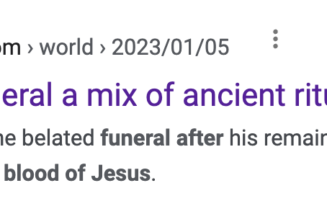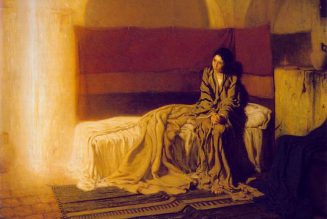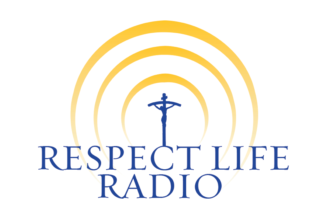
This endless summer ravaged by political divisions, civil unrest and statue-toppling (did we mention there’s also a deadly virus out there!) has made for a very busy time in journalism. For news sites, this deluge of events to report on has meant long hours for remote-working staffs who have also had to endure furloughs and layoffs in a worsening economy.
We live in a culture hijacked by politics.
It has become exhausting to follow the news (especially via social media) because of this political prism through which everything is now viewed. It has become our country’s new religion for millions.
As mainstream news outlets increasingly abandon objectivity and transition into advocacy, some very important stories and trends never get to readers. The internet has fueled “filter bubbles” and newspapers transitioning to digital rely increasingly on subscribers (as a business model) and less on general readers. It also helps spread misinformation. For example, a new Pew study revealed that people who get their news through social media actually knew less.
That means editors now give readers want they want to read (often reporting on the unchecked assertions of lawmakers within their bubble), rather than presenting an unbiased view of what happened. At the same time, the tech companies got an earful from Republicans who argued that giants like Facebook and Amazon for “empowering” people who “traffic in hate” against religion.
While the mainstream press failed to focus on this angle of the hearing (see tmatt’s post from and podcast), Timothy Nerozzi, writing at Religion Unplugged (where I also regularly contribute news articles, commentary and reviews), didn’t. This is how he started his news story:
During an hours-long antitrust hearing in Congress July 29 with CEOs of Amazon, Facebook, Google and other tech companies, Representative Matt Gaetz (R-Fla.) accused Amazon and Facebook of “empowering” people who “traffic in hate” against mainstream American religions.
Gaetz called out Jeff Bezos specifically during the hearing, accusing him of unknowingly partnering with institutions that hold intolerance towards religious charities and foundations.
“I am not accusing you as someone who would ever traffic in hate,” Gaetz said. “But, it seems that you have empowered people who do. And I’m particularly talking about the Southern Poverty Law Center.”
The Southern Poverty Law Center (SPLC) is a legal non-profit founded in 1971 that describes itself as “dedicated to fighting hate and bigotry and to seeking justice for the most vulnerable members of our society.” The SPLC has faced backlash in recent years for perceived overeagerness in designating individuals and organizations as “extremist.”
Gaetz continued, “The Southern Poverty Law Center, who you allow to dictate who can receive donations on your Amazon Smile platform, has said the Catholic Family News, Catholic Family Ministries, Federation for American Immigration Reform, the American Family Association, the Family Research Council, the Jewish Defense League, and even Dr. Ben Carson are extremists, and should be treated differently.”
Why go into all this?
Because this business model has changed journalism’s priorities in the internet age. Algorithms and trending topics have replaced news judgement (you can read more on that in a previous post from last month). The New York Times has hailed on its front page “All the news that’s fit to print.” It should now read this: “All the news that fit to tweet.” The resignation of columnist Bari Weiss last month laid out those facts in a way very few journalists have ever done over the last few years.
What’s lost in all this is the curiosity that characterized the motivations of a journalist. One has to look no further than the increasingly worrying trend of Catholic churches and statues being desecrated across Europe and now the United States.
July was not a good month for this — and the national media largely ignored the desecrations. Certainly editors, writers and those who stare at Internet traffic all day probably thought it wouldn’t be of interest to their readers. The only exception was The Wall Street Journal with a story on July 22, some three weeks after the first incidents.
The attacks continue. The most recent coming this past weekend when vandals beheaded a statue of St. Jude outside a historic Denver church.
The New York Times and NBC News, legacy media outlets with millions of readers, have warned us over the last month of right-wing political movements growing in power in Germany and across Europe. These same outlets can’t be bothered to report on church desecrations and the beheading of Jesus statues committed largely by forces on the far political left.
The recent arson that damaged the cathedral in Nantes — part of a larger trend of anti-Christian behavior in France in recent years — and LGBTQ activists desecrating a statue of Jesus just last week speak to the global power of some Leftist forces in the world today. There were some protesters in Portland burning several Bibles this past weekend. Does that have anything to do with what’s happening regarding church desecrations or is it part of a general climate of intolerance towards Christian symbols? Is it both?
Catholic media, meanwhile, has done a wonderful job aggressively reporting on this disturbing trend.
Yes, their audience is interested in such news, but not only. Anything to do with what happens in the Catholic world is worth reporting on. That’s their mission. In some cases, it isn’t journalists doing the reporting, but everyday people. This has happened in the past. Bloggers famously unmasked CBS News for airing a false report using critical letters (later deemed to be a hoax) of George W. Bush’s time in the Texas Air National Guard, a scandal (known as the Killian documents controversy) that ultimately ended the career of anchor Dan Rather.
Complicit Clergy, a group of laypeople who primary work to fight clerical sexual abuse, developed an interactive map showing the various attacks on Catholics taking place this year across North America. This is how EWTN, a conservative Catholic news site, reported on this new interactive feature:
The map shows the attacks on “Catholic statues, parishes and persons.” It consists of clickable crosses, directing users to each attack location.
Once users click on the attack location, the pin shows a photo, date, and exact location of the attack. It also includes a news link for more information about the incident.
EWTN reported that the feature, generated by Google Maps, has tracked more than 60 incidents as of last week, a truly astonishing number for just one year. The map has received more than 73,000 views. The map also includes a way for people to report incidents.
Why hasn’t The New York Times done anything like this?
The newspapers has dozens of staffers able to create all kinds of interactive features of the highest quality. It’s through its photos, graphics and tech tools that the Times storytelling on big stories gives readers the ability to delve into a story like few other newspapers can. An interactive feature on last year’s Notre Dame fire (which was deemed accidental) deserved high praise.
The lack of coverage has to be tied to the emerging business model. With staffs increasingly interested in peddling water for whatever latest political cause, the desecration of churches — and who committed them — could hurt the narrative they are trying to package for readers. Why hasn’t anyone asked President Donald Trump about the desecrations at the many media availabilities he provides reporters? What about asking his Democratic challenger Joe Biden? The former vice president is, after all, Roman Catholic.
There are also news accounts of parishioners coming together to rebuild or restore these damaged statues of Jesus or the Virgin Mary. Here’s one story from Catholic News Agency about people coming together to do so — complete with surveillance video of the man who desecrated the statue of Mary:
A California parish has restored an outdoor statue of Our Lady of Guadalupe, after it was kicked to the ground and broken in an act of vandalism.
On July 21, security cameras at St. Joseph Parish in Upland, California, captured a video of a young man approach a statue of Our Lady of Guadalupe and kick the statue repeatedly until it fell from its base. Metal rays from behind the statue can be seen to crack off.
The same evening, security cameras captured another young man, who picked the statue from the ground, placed it on its base, and sat before the statue in prayer.
Fr. Timothy Do, the parish pastor, asked parishioners to “pray for peace in the world, the end of hatred and anger, and that we continue to have compassion and love for each other,” in a video released on Facebook July 22.
In additional videos, parishioners prayed both the chaplet of divine mercy and the rosary in Spanish while standing before the damaged statue.
In Dorchester, near Boston, a statue of Mary was desecrated twice in a month. Local news outlets have done the reporting on this, but you won’t read about these incidents in any national newspaper.
Once again, it’s religious media that’s done the reporting here on a trend that should worry not just Catholics, but people of all faith traditions or even those who seek peace and tolerance.







